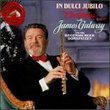| All Artists: Anna Netrebko, Marianna Pizzolato Title: Stabat Mater - A Tribute to Pergolesi Members Wishing: 0 Total Copies: 0 Label: Deutsche Grammophon Original Release Date: 1/1/2011 Re-Release Date: 4/26/2011 Genre: Classical Style: Symphonies Number of Discs: 1 SwapaCD Credits: 1 UPC: 028947793373 |
Search - Anna Netrebko, Marianna Pizzolato :: Stabat Mater - A Tribute to Pergolesi
 | Anna Netrebko, Marianna Pizzolato Stabat Mater - A Tribute to Pergolesi Genre: Classical
Since its advent as a fashionable watering place in the early 19th century, Russian aristocrats, merchants and artists have flocked to the charming southern German spa town of Baden-Baden. Tolstoy used it as a location for... more » |
Larger Image |
CD Details
Synopsis
Product Description
Since its advent as a fashionable watering place in the early 19th century, Russian aristocrats, merchants and artists have flocked to the charming southern German spa town of Baden-Baden. Tolstoy used it as a location for part of Anna Karenina, and Dostoyevsky was a frequent visitor at the gilded casino. But one particular Russian has recently taken the town by storm with unparalleled success. Since her triumphant debut in 2001 Anna Netrebko has become one of the most popular singers - if not the most popular - to make regular appearances there. Netrebko-fever grips the inhabitants every time she's due to perform, and portraits and pictures of her spring up everywhere. Jostling crowds rush to the stage door for her autograph after a performance. For her concerts in July 2010, Anna Netrebko chose to take a risk. Rather than stick to the tried-and-tested route of Russian repertoire (her Iolanta in Baden-Baden in 2009 received dazzling reviews) or recitals of opera arias, she decided to programme works from a period with which she is not often associated - the Baroque. She opted to concentrate on the music of Giovanni Battista Pergolesi, whose tercentenary was being celebrated in 2010. Although he died tragically young, Pergolesi wrote an important comic opera (La serva padrona) which influenced the future development of the whole genre, and a Stabat Mater which became one of the most frequently printed pieces of sacred music of the 18th century. The latter, a cantata for two voices and a small chamber orchestra, was known and admired by Mozart and has remained popular - with both specialists and non-specialists in Baroque repertoire - into our own times. Since Anna Netrebko was keen to present both the sacred and secular sides of Pergolesi's output, and since the Stabat Mater is a duet, it felt like a good idea for each of the duettists to have a non-religious work to sing, too. Anna Netrebko chose Nel chiuso centro, a delightful cantata she had sung once very early in her career, and her mezzo colleague Marianna Pizzolato chose a work with equal opportunities for dramatic and lyrical expression, Questo è il piano. Anna Netrebko knew that she would have to modify her voice to cope with the demands of the Baroque style. She was aware that pieces with such small-scale accompaniments are rarely performed in a hall like the Festspielhaus, which seats 2,500 people. And she knew that specialists in period performance practice might shoot her down in flames. But her deep love for Pergolesi's music spurred her on. And if there's one thing that gets Anna Netrebko's cylinders sparking on full throttle, it's a challenge. Fortunately she found a team of colleagues who were up for the ride, too. The management of the Festspielhaus had long been keen to host maestro Antonio Pappano and his Santa Cecilia orchestra from Rome. On this occasion the scheduling fairy waved her wand, and the opportunity finally arose. The conductor was delighted to work with Anna Netrebko again (he had recently finished a run of Manon with her at Covent Garden) and agreed to her Pergolesi idea with enthusiasm. Although the Santa Cecilia orchestra is not a period-instrument ensemble, they often collaborate with Baroque conductors such as Ton Koopman and have a thorough understanding of period style. For his own first fully Baroque programme with the orchestra, Antonio Pappano decided to use a small number of players and employed the Baroque specialist concertmaster Alessandro Moccia to lead the ensemble. It was Antonio Pappano, too, who suggested the young, rising-star Italian mezzo Marianna Pizzolato for the lower voice part in the Stabat Mater. He wanted a singer whose sound would not only be a good blend with Anna Netrebko's, but who would be able to form a real emotional and musical partnership with the soprano - a "sisterhood", as he came to call it. As the concerts subsequently proved, his choice could hardly have been better. The preparations for the concert were happy but nerve-racking. "It was stressful", confesses Anna Netrebko. "I thought: why did I want to put the Stabat Mater in this big hall? I felt people were expecting me to do something big or spectacular again, like throw my shoes off and dance." (She had done just that during a lively rendition of Meine Lippen, sie küssen so heiß at a gala in 2007, much to the delight of the audience.) "At first I tried to pull my voice back and sing as a Baroque singer, but then I didn't think it was a good idea. I had to find a middle way, to perform with my own voice." Antonio Pappano also relished the challenges. "We all had to fight to make our ideas work", he says. "Our concertmaster was wonderful in helping us understand how the bowing is different in this repertoire. Baroque phrases are traditionally played shorter, with pauses between, but that's not how singers sing, so we had to find creative compromises. We had a real exchange, a proper give-and-take. It was wonderful for me to learn about that close up, and then to put it in practice in my own way." Marianna Pizzolato worked hard, too. "I sing some Baroque music but it's not my daily bread", she says. "So even though I always use the same basic technique, I needed to find the right mode of expression for this style." Fortunately, she clicked with Anna Netrebko instantly. "We met in London, and immediately found that we could really blend and unite our voices. We had a great time." With so much that was new for every participant it was hardly surprising that the concerts felt like a journey for all. The Festspielhaus itself helped confirm the impression: the venue is a stylish conversion from an ornate 19th-century railway station. A visit there always feels like the start of an exciting voyage. It was all an enormous success. Maestro Antonio Pappano encouraged the players to bring Italian fire and spirit to the playing, without compromising the integrity of the style. He interpreted Pergolesi's simple piano and forte markings as indicating sudden exciting extremes of dynamics, and created moments of haunting pathos. Anna Netrebko's perfect, razor-like trills on the word "pertransivit" (pierced) in the aria "Cuius animam", and her cry of anguish in "Vidit suum dulcem natum" (She saw her sweet Son) were thrilling. Marianna Pizzolato's warm-as-brandy voice melted listeners from the very first notes of Questo è il piano. The audience was so enthusiastic that it broke all the conventions for performances of sacred music and demanded an encore. The musicians gave them the final duet once more. "I loved it", says Anna Netrebko. "It was a new experience for me, and so exciting. I feel like I've opened a new page." Warwick Thompson
Similar CDs
Similarly Requested CDs
| Labeque Sisters Labeques: Love of Colours Genre: Classical Label: Sony | |
| Dexter Gordon Ballads: Dexter Gordon Genres: Jazz, Pop Label: Blue Note Records | |
| Verve Urban Hymns Genres: Alternative Rock, Pop, Rock Label: Virgin Records Us | |
| Chris Botti Night Sessions Genres: Jazz, Pop Label: Sony | |
| James Galway In Dulci Jubilo Genres: Special Interest, New Age, Classical Label: RCA | |

 Track Listings (23) - Disc #1
Track Listings (23) - Disc #1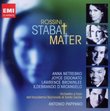
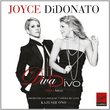

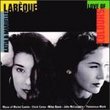
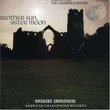


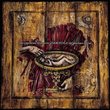

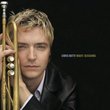
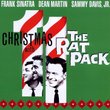
![Across The Universe [Deluxe Edition]](https://nationalbookswap.com/cd//m/51/1251/1241251.jpg)
